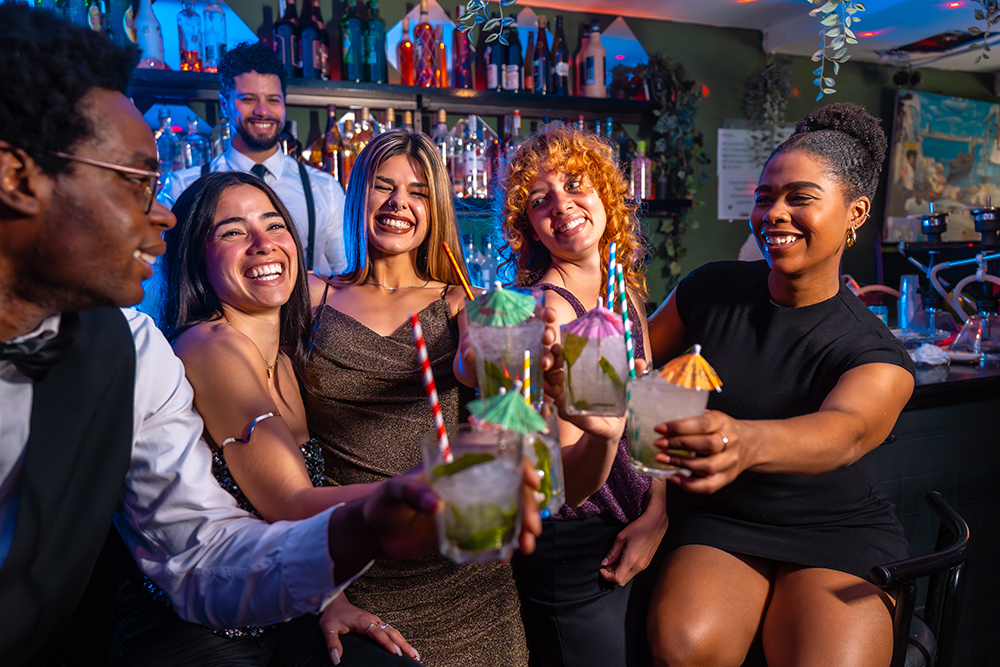Your humble narrator has been revelling in the warm days of summer, and enjoying all the licentiousness that comes with this time of year.
BBQs and garden parties are popping up in backyards everywhere, and boozers begin to thirst for summery drinks. What better backyard party drink to enjoy than the original fruit punch with a kick? Yes, gentle reader, I am referring to Sangria.
Sangria is a wine punch that is considered the quintessential Spanish summer drink. Many a tourist in Barcelona whiles away the afternoon sitting on the café patio with a Sangria firmly in hand.
Purely in the interest of Sangria research, your lounge lizard lothario of a liquor reporter spent the weekend wooing a hot and sultry Spanish beauty, in a crafty attempt to secure her secret family recipe for Sangria.
I’ll spare you the more prurient details, but suffice it to say that she finally gave in to my seductions, and the much-guarded recipe is now mine!
Faithful readers may recall that I am all too ready to share liquor-related advice, and today will be no different. Here’s my liquor tip of the day: Don’t order Sangria at a restaurant or bar. It will be a pale imitation of a real Sangria. Good Sangria takes several hours to make, and bartenders don’t have that kind of time.
Why does Sangria take so long? You need to let the fruit sit in the wine for several hours to allow the flavors to blend together for the true Sangria taste to present itself.
If you order a Sangria at a restaurant or bar, you will probably receive a similar drink called Tinto de Verano. That translates Red wine of summer for those who do not habla espanol ‚- it’s basically red wine mixed with lemonade or soda, with a few chunks of fruit thrown in for the touristy appeal.
Tinto de Verano is fast and easy to make, so bartenders will usually throw one of these together, maybe even throwing in a slice of orange or lemon, then serve it up to an unsuspecting tourist as a Sangria. Don’t be fooled – good Sangria is always made at home!
Sangria was invented in Spain in the 1600’s, and spread quickly to other European countries, finally making its way to North America via the 1964 World Fair in New York. An inexpensive and fun party drink, Sangria is now enjoyed the world over, and shows no sign of losing steam anytime soon.
There is no one "right" recipe for Sangria; the ingredients vary widely, but I will share with you the recipe that I had to seduce many beautiful women to obtain. Yes, yes, I know. My work is a trying ordeal, bringing you, the faithful reader, only the best in booze news every week.
Begin with a bottle of red wine. Uncork it and take a swig to make sure you like it. Purists will use a Spanish Rioja or Tempranillo, but any medium-bodied red table wine will do. Don’t use an expensive bottle, as the subtleties of the wine will be lost when the fruit is added. Pour the wine into a serving pitcher or punch bowl.
Chop up two apples and two oranges into small cubes. Yes, I realize oranges are hard to cut into cubes. Just do your best. Add to the wine.
Add two tablespoons of liquid honey. If you’re feeling adventurous, substitute the honey for half a can of frozen concentrated orange juice. Be sure to mix well.
Add two ounces of Grand Marnier or Triple Sec. Now you will play the waiting game. Leave the whole concoction to mellow in the fridge for 4-6 hours. The hours spent in the fridge will draw the fruit flavors into the wine, so be patient, don’t sneak any sips at the twenty minute mark, or you’ll be sampling a pale imitation of what good Sangria should taste like.
After you patiently wait all those long hours, it’s finally time to enjoy the fruits of your labours. When you are ready to serve, fill half of the pitcher or punch bowl with ice, then pour the sangria over the ice. Add two cans of Sprite or similar lemon-lime soda and serve to your thirsty guests! This should serve 3-4 people, so just double the ingredients if you’ve got more guests.
Every Spanish family has their own Sangria recipe, so feel free to experiment. Use mangoes instead of apples, or Schnapps instead of Brandy. Half the fun with Sangria is perfecting your own signature recipe, so get to work!






